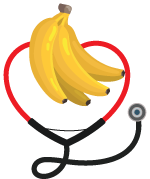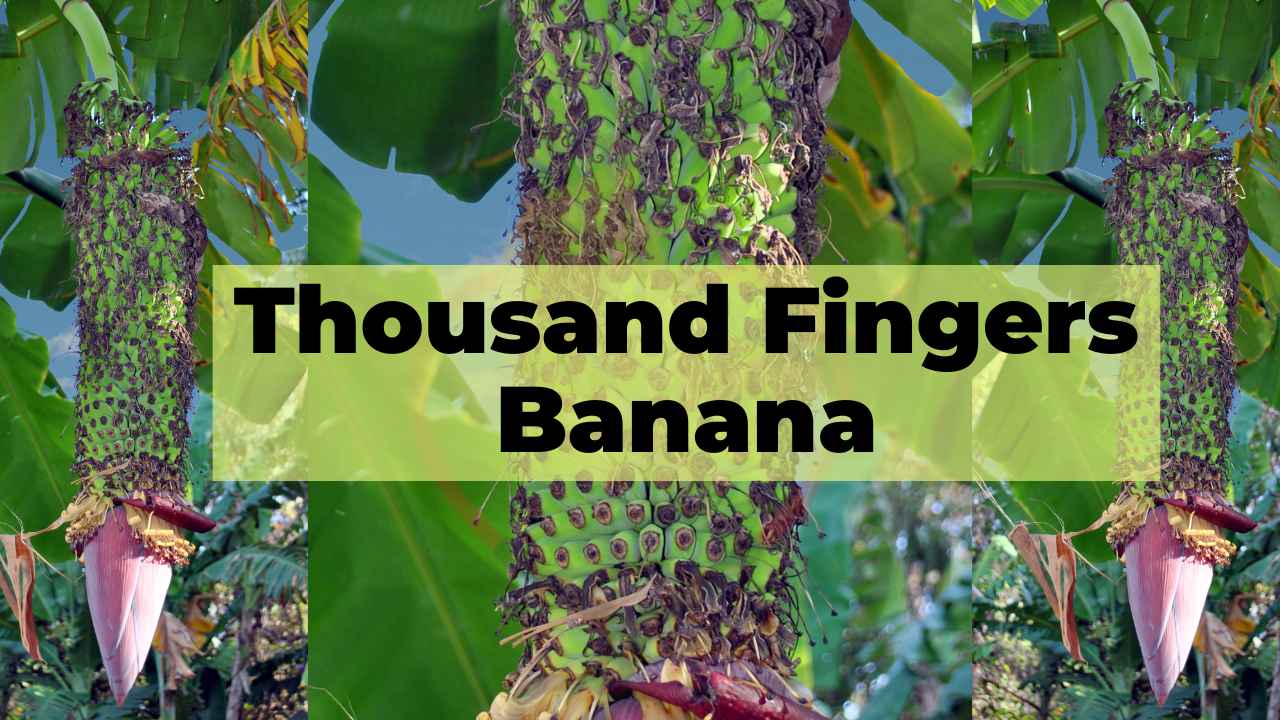Written By Sania Malik || Reviewed By Adeel Abbas
Thousand Fingers bananas, also known as Pisang Seribu in Indonesia, are a variety of banana that is native to Southeast Asia.
This banana is small in size, with each bunch containing hundreds of small, thin fingers that are tightly packed together. The skin of the this banana is thin and delicate, and turns from green to yellow as it ripens. [1]
In this article, we’ll take a closer look at the Thousand Fingers banana and explore its many benefits.
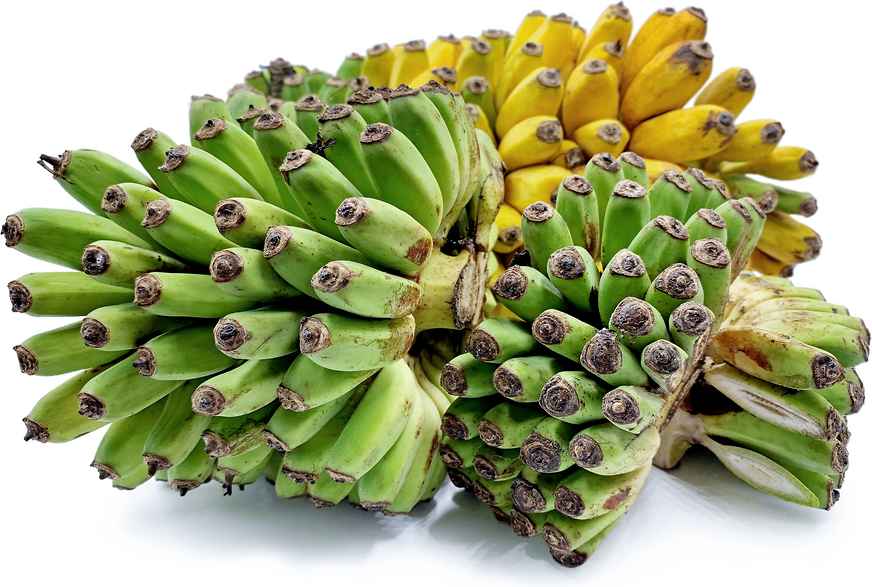
Origin of Thousand Fingers Bananas
“Thousand Fingers” bananas, also known as “Lakatan” bananas, originate from the Philippines. They are distinct for their sweet taste and are primarily grown and consumed in the Philippines. These bananas have a unique appearance with tightly packed small fingers in each bunch.
Characteristics of Thousand Fingers Bananas
- They originate from the Philippines.
- These bananas are characterized by tightly packed bunches of small, slender fingers, giving them their unique name.
- They have a sweet and aromatic flavor, distinct from the milder taste of Cavendish bananas.
- Thousand Fingers bananas have a smooth texture and firmness when ripe.
- They are popular for snacking and are also used in various dishes and desserts in the Philippines.
- While less common in international markets, they are occasionally exported to select countries.
Nutritional Values
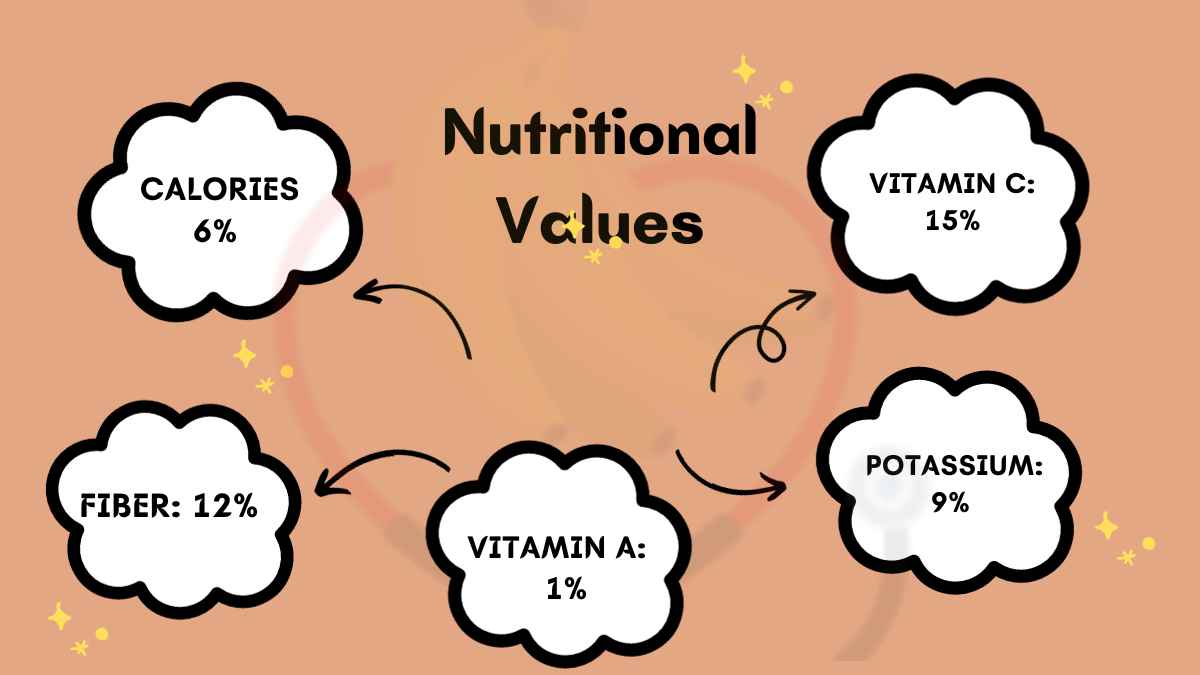
- Calories: 6% of DV
- Carbohydrates: 12% of DV
- Dietary Fiber: 12% of DV
- Sugars: 20% of DV
- Vitamin C: 15% of DV
- Vitamin B6 (Pyridoxine): 20% of DV
- Potassium: 9% of DV
- Vitamin A: 1% of DV
- Vitamin B2 (Riboflavin): 3% of DV
- Vitamin B3 (Niacin): 5% of DV
- Folate: 3% of DV
- Magnesium: Approximately 6% of DV
Health Benefits
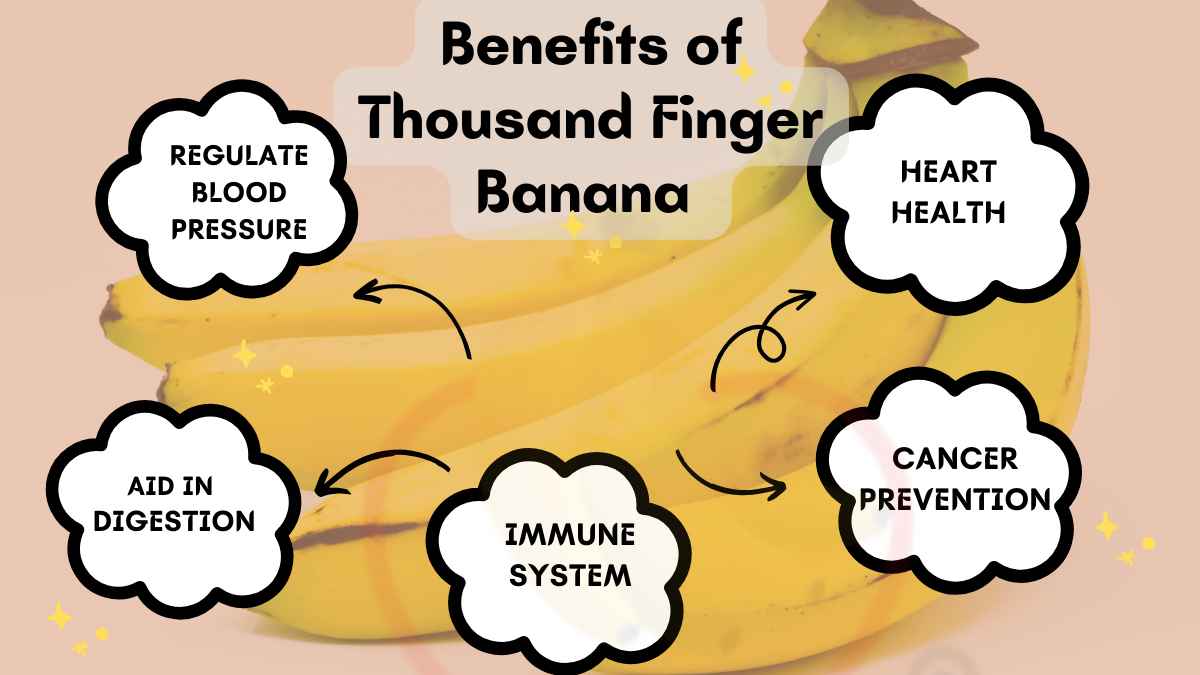
- Eating Thousand Fingers bananas provide a range of health benefits.
- The potassium in these bananas can help regulate blood pressure, while the fiber aid in digestion and promote feelings of fullness. [10]
- The vitamin C in these bananas can boost the immune system and protect against diseases such as cancer and heart disease.
Interesting Facts
- The Thousand Fingers banana is also known as the “tree of a hundred uses” due to its many versatile applications.
- In Indonesia, Pisang Seribu is often used in traditional medicine to treat a variety of ailments.
- The small size of the Thousand Fingers banana makes it a great snack for children or for packing in lunches.
Recipes Using Thousand Fingers Bananas
Thousand Fingers bananas are a versatile ingredient that can be used in a wide range of culinary applications. Here are four recipes that showcase the unique
Thousand Fingers bananas are a unique and delicious fruit that offer a range of nutritional and health benefits.
While they may be more difficult to find than other banana varieties, they are well worth seeking out for their distinctive flavor and versatility.
Whether you eat them on their own or use them in a variety of culinary applications, These bananas are a great addition to any healthy diet.
FAQs
Can I use Thousand Fingers bananas in baking recipes?
Yes, Thousand Fingers bananas can be used in a variety of baking recipes, such as banana bread or muffins.
How do I know when my Thousand Fingers bananas are ripe?
Thousand Fingers bananas will turn from green to yellow as they ripen. You can also tell if they are ripe by gently pressing on the skin – if it gives slightly, it is ripe and ready to eat.
Are Thousand Fingers bananas high in sugar?
Thousand Fingers bananas do contain natural sugars, but they are lower in sugar than other banana varieties. They are also high in fiber, which can help regulate blood sugar levels.
Can I freeze Thousand Fingers bananas?
Yes, you can freeze ripe Thousand Fingers bananas for later use in smoothies or baking. Simply peel the bananas and place them in a freezer-safe container.
How do I incorporate Thousand Fingers bananas into my diet?
Thousand Fingers bananas can be eaten on their own as a snack, or used in a variety of culinary applications. They can be mashed and used as a natural sweetener in smoothies or oatmeal, or sliced and added to a fruit salad. They can also be used in baking recipes, such as banana bread or muffins.
